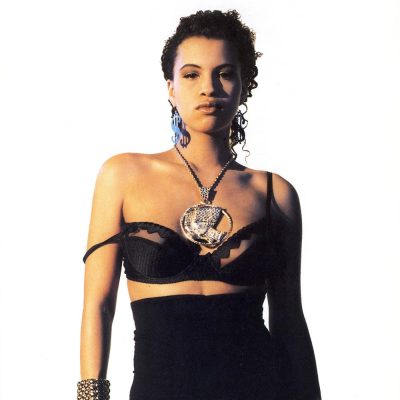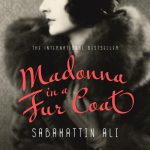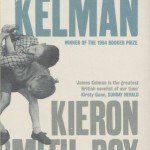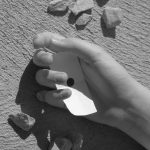Jude Rogers’ remarkable book captures the unique power of music to heal and inspire, writes Alistair Braidwood
Support independent, non-corporate media.
Donate here!

There have been numerous books written about how music comes to soundtrack our lives. Recent notable examples include Sylvia Patterson’s I’m Not With the Band, Dylan Jones’ Shiny & New, and Pete Paphides’ wonderful Broken Greek. And there have been many others concerned with why music has such a powerful effect, publications such as Why We Love Music: From Mozart to Metallica – The Emotional Power of Beautiful Sounds by John Powell, Daniel Levitin’s This Is Your Brain On Music, and even David Byrne’s How Music Works. Jude Rogers’ The Sound of Being Human weaves these two strands of music writing together beautifully to tell us not just what the soundtrack to her life has been, but also explores the lesser asked question – “why?”.
If you are like me, then over time you will have built up relationships with certain music and arts journalists, coming not just to trust their judgment but feeling you share common critical ground. Jude Rogers is one of those writers who make me want to know more – not only about the music being written about, but why it has provoked the response it does. Why it is worthy of attention. That’s because she writes with emotion, passion, and heart in a manner too few do. It’s the kind of arts journalism I am attracted to, and she is someone whose work I will read no matter the subject. All of these things are in The Sound of Being Human, but there’s so much more. By relating significant events in her own life in the honest, and often moving, manner that she does it invites readers to reflect upon their own relationship with music, bands, singers, and the songs which take us back to people, places, events and experiences along the way.
The book has an incredibly powerful and emotional beginning as the five-year-old Jude Rogers loses her adored and adoring Dad in tragic circumstances. The opening chapter, titled ‘Before the Music Starts’, explains how a shared love for music has kept daughter and father connected ever since, and it makes for a heartbreaking yet uplifting opening which contextualises what follows. As her life unfolds throughout the ensuing chapters readers are taken through the events which shape Rogers’ life to this point, and the songs which take her back, helping to define such memorable moments. From childhood, through the tricky teenage years, to more adult concerns, she creates her own mix-tape made up of memory and music.
The structure of the book is one which invites music fans in particular to read on. The chapters are referred to as ‘tracks’, of which there are 12, plus a ‘secret track’, and the book is split into the old-school vinyl format of two sides. The choice of music is wonderful as well. Rogers has no desire to appear cool or obscure, nor is there any attempt to flex her musical knowledge and impeccable taste. Each ‘track’ fits perfectly, and while I won’t spoil things by telling you her exact choices, they include some of my favourite artists (such as Neneh Cherry, Kate Bush, Talk Talk, Prefab Sprout/Paddy McAloon), and I’m willing to bet some of yours as well, which only adds to the relatability.
While these are Jude Rogers’ individual memories she does investigate the importance of music as a shared experience, whether being part of “twenty thousand people standing in a field”(1), or discovering other individuals who share your passions and obsessions for a band or musician, and how that can in turn prompt your own form of creativity. It will not apply to everyone, but for many people their relationship with music is not a passive one. It can inspire in a number of ways, whether that’s making your own, or other art inspired by the objects of your fan worship, but also by writing, filmmaking, photography, broadcasting, and more. It’s why I’ve written this review.
There is also investigation to accompany the memoir, and alongside the song titles which accompany each chapter there are “How/Why/When” questions asked. The attempt to answer them brings a rigour and analysis which you are unlikely to find in other such memoirs. It is more than there being “now it’s time for the science” sections. Each enquiry is relevant not only to that individual chapter, but to the book as a whole, and can be applied to your own reminiscences whatever they may be.
It also helps explain those times when music you may not usually fall for hits hard, or why you become obsessed at certain times of your life. Songs can arrive just in the nick of time to help make sense of strong emotions such as love, grief, sorrow and joy. With that in mind, the chapters on the formative and teenage years, when those first relationships with music are formed and, in no small part, set what comes next, are particularly interesting. However, Rogers, and those she speaks to, also look at the way that the relationship changes as we do, evolving to allow new music into our lives – music that puts the past, present, and future into context. Jude Rogers admits that some nostalgia is inevitable but not only should that not be denied, it should be celebrated as part of the greater whole.
The Sound of Being Human is a life-affirming read, reminding you of all those times songs meant something more, enhancing moments and memories. It asks you to dig into your own recollections (and record collections) and examine them anew, a reminder of just why we fall in love with music in the first place. With a very human and relatable story at its heart The Sound of Being Human is a great memoir in its own right, and as such will be of interest to all. However, if you consider yourself a music fan then I would suggest The Sound of Being Human is as close as it gets to required reading.
(1) Lyrics from Pulp’s Sorted for E’s & Wizz from the Different Class album, 1995.
The Sound of Being Human is available now in paperback.









